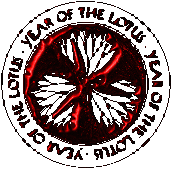Little Asia
Description
The Five Winds Wall stops all traffic. The awe-inspiring barrier stands ten feet tall and extends as far as the eye can see: looping around the entire district until the border of Little Asia becomes the Blue River. This massive project must have cost millions of dollars in concrete and months of building and effort. Not only was the structure put up without pause, but it was beautified with artistic graffiti. Epic murals of nature and human life decorate much of the wall and itís always being worked on. Defacement of this property is rewarded with stiff fines. Plus, itís widely rumored that no one has ever gotten away with spray-painting this regional wonder against the publicís wishes without this fine and a vicious beating from Little Asia locals when the police are done.
The Five Winds Walls separates Little Asia from the rest of the city. It requires outsiders to pass through the south end red-glossed, zodiac-style gates. The north end is clearly for trucking traffic, as it is merely a highway that leads out towards Smithville and the main Interstate exchanges. It leads into the districtís more industrial zone, where few tourists venture. On the west side, there is a breach in the wall for another freeway that leads out to the Rolling Heights suburbs. The east side isnít walled off at all, as the Blue River stands as serviceable border. There are no other gates or even doorways. Little Asia is cut off and thatís what the majority of the citizens within wanted.
Just past the south zodiac, however, Little Asiaís famous and bustling Marketplace greets guests. The other commercial and cultural areas of the district lie not far beyond. For twenty city blocks, a tourism-geared district extends a feeling of welcome and joy. Small businesses of all sorts imaginable, mostly owned and operated by entire families, line the pavement. Street vendors peddling anything they can peddle mingle in a thick crowd of people engaged in daily commerce. One and two-story structures, raised tightly together, permit only narrow alley spaces. Beyond, giant Asian conglomeratesí American bases tower in daunting comparison to the skyscrapers elsewhere in the city.
The eye candy of the district all but ends there, however. The well-kept neighborhoods of the ďtourist vicinityĒ fade into dirty, cramped streets between warehouses and fenced-off sweat shop factories. A stink lingers in the air that isnít present at the commercial area, the stink of too many people cramped together. Refuse and graffiti litters the district up here, even as it becomes the docks on the western bank of the Blue River. A sense of despair starts to settle in this part of town.
A little over to the west, the industry fades into townhouses and apartment buildings, rising as high as nine stories. The buildings, though close together, are all neatly placed. And most of them are well-kept (although the overpowering smell of Oriental cooking might irritate most Westerners). Neat bouquets of flowers and beloved statuettes of Buddha grace many windows and doors, defying the anguish of piss poor urban life.
And the further west one goes, the nicer the homes become. They give way to full family houses and condos for those that can afford them as the urban sprawl gives way to suburbia. Little Asia remains apart from the suburbia of Rolling Hills, however, due to the Five Winds Wall. Little Asia is a tourist's stop-over, yet remains isolated from the rest of the city and world.
















The Little Asia District Map is best viewed in a fresh browser.


































